

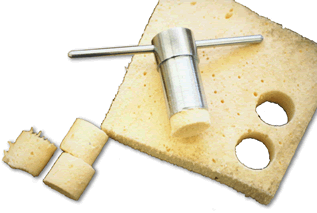 | ON-SITE TESTING OF SPRAY APPLIED POLYURETHANE FOAM (SPF) |
Introduction
| Application of new and existing roofing systems consisting of spray applied polyurethane foam (SPF) should currently meet ASTM standards. These are either ASTM D 5469 for new systems or a proposed new standard from ASTM for coverings applied over existing roofing systems. These standards outline general procedures and precautions necessary for proper and safe application of SPF roofing systems. A common aspect of the standards is sampling and testing. It states that two core samples should be taken for the first 10,000 square feet of roof area and one sample for each additional 10,000 square feet or fraction thereof. These core samples must be tested for foam thickness, lift thickness, compressive strength (ASTM D 1621), density (ASTM D 1622), and cell structure (ASTM D 2856). | 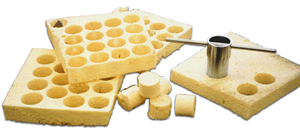 |
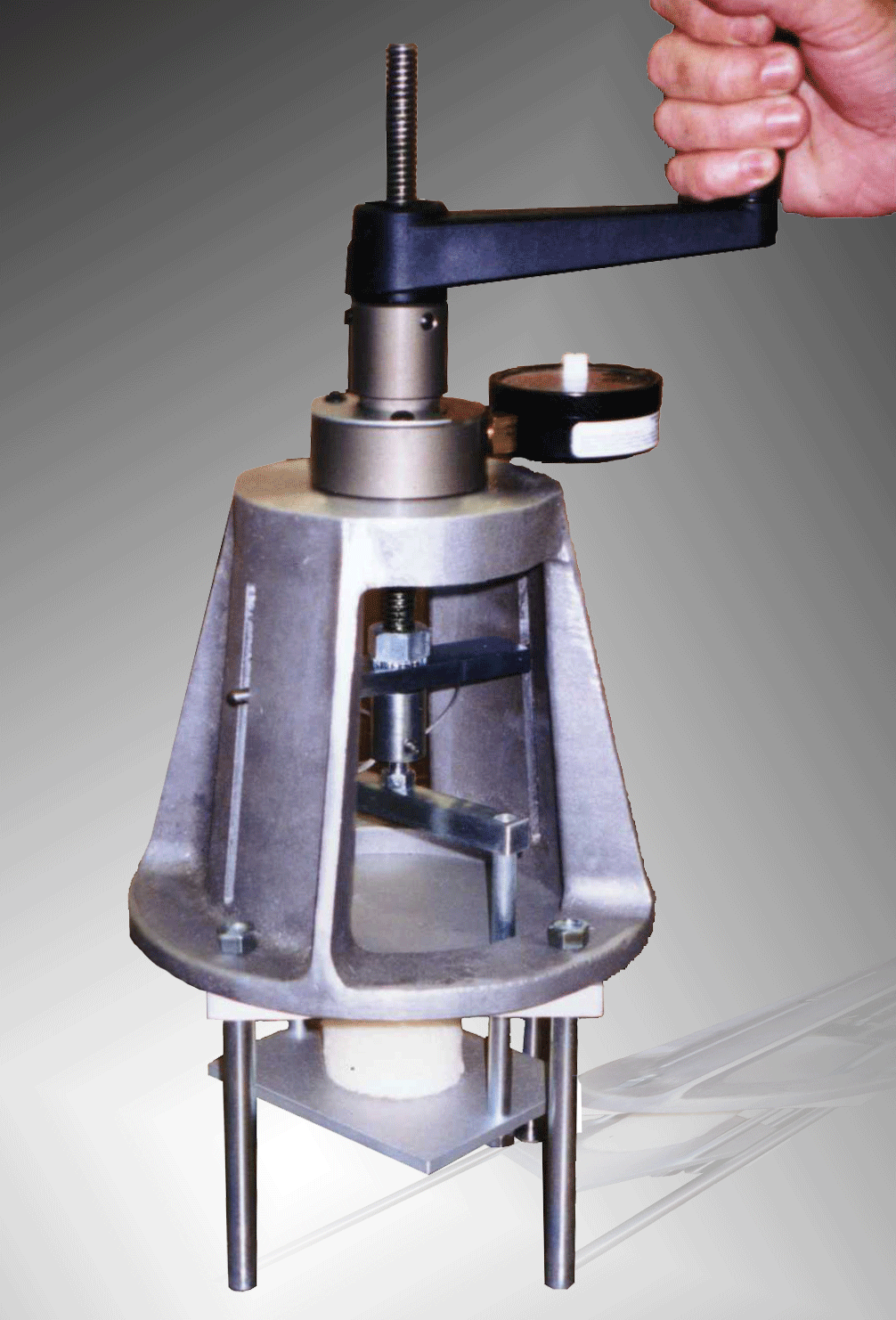 | The ASTM tests listed above are designed to be laboratory tests. With traditional methods, SPF must be sprayed on-site, core samples taken and forwarded to a laboratory at a remote location for testing. Often, this laboratory is the in- house testing facility of the manufacturer of the product being tested. Not only does the testing require at least a couple of days (during which time the applicator continues to apply the product), but with the manufacturer testing his own material conflict of interest issues arise.Field confirmation that the core sample meets the manufacturer’s published specification values for compressive strength is a reasonable indicator that the formulation is within the manufacture’s limits as applied. An on-site test method eliminates transit time required for testing of samples and substandard roofing systems can be identified immediately. In addition, according to ASTM D 5469, the entire roof must be sprayed before samples can be taken and substandard material identified. At this point the roofing system must be completely replaced at enormous cost. With a field compression test, a small sample could be sprayed and allowed to set. The compressive strength of the SPF could be measured immediately and, if passing project’s or manufacture’s requirements, be applied to the entire area. Core samples should be taken and tested during and upon completion of the application as well. |
A
field test is available to measure
the compressive strength of spray applied polyurethane foam shortly
after
installation, allowing for appropriate curing time. To be widely
accepted in
the industry, this testing device and procedure must use proven testing
technology; be simple and easy to use; be inexpensive; and be portable
for use
in the field. As called out in the ASTM application guide, the on-site
testing
device approximates ASTM D 1621 “Standard Test Method for
Compressive
Properties of Rigid Cellular Plastics”. The device must have
repeatable results
that can be correlated to data reported from laboratory testing.
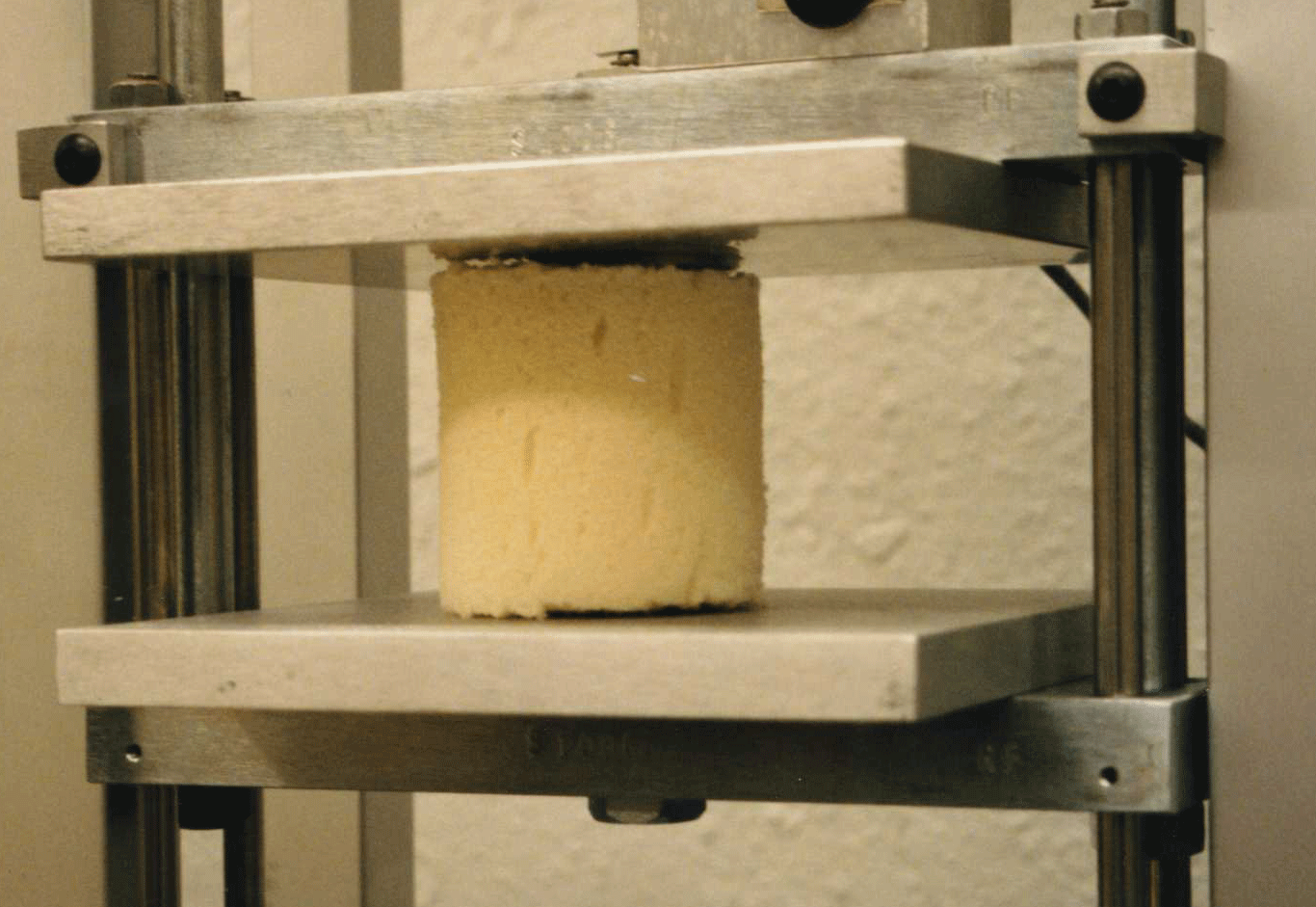
| After application of the SPF to a small area, core samples are be taken with a standard size core cutter. The core sample is trimmed flat and parallel and placed in the Portable Foam Compression Tester. The operator compresses the sample at a constant rate of approximately 5 revolutions per minute, which relates to a crosshead speed of 0.5 inch/min. While continuing to compress the sample, the movement of the force gauge is closely watched. The force continues to rise until it levels off at the material’s yield point. At this point the force ceases to increase (or increase very slowly) while the sample continues to be compressed. This is the yield, or primary failure, point of the material. If the material continues to be compressed, the force will begin to increase after a time. At this point the test is stopped and the yield point recorded. The yield point, as read on the force gauge, must be divided by the cross sectional area to obtain the yield strength in psi (lb/sq. inch). |
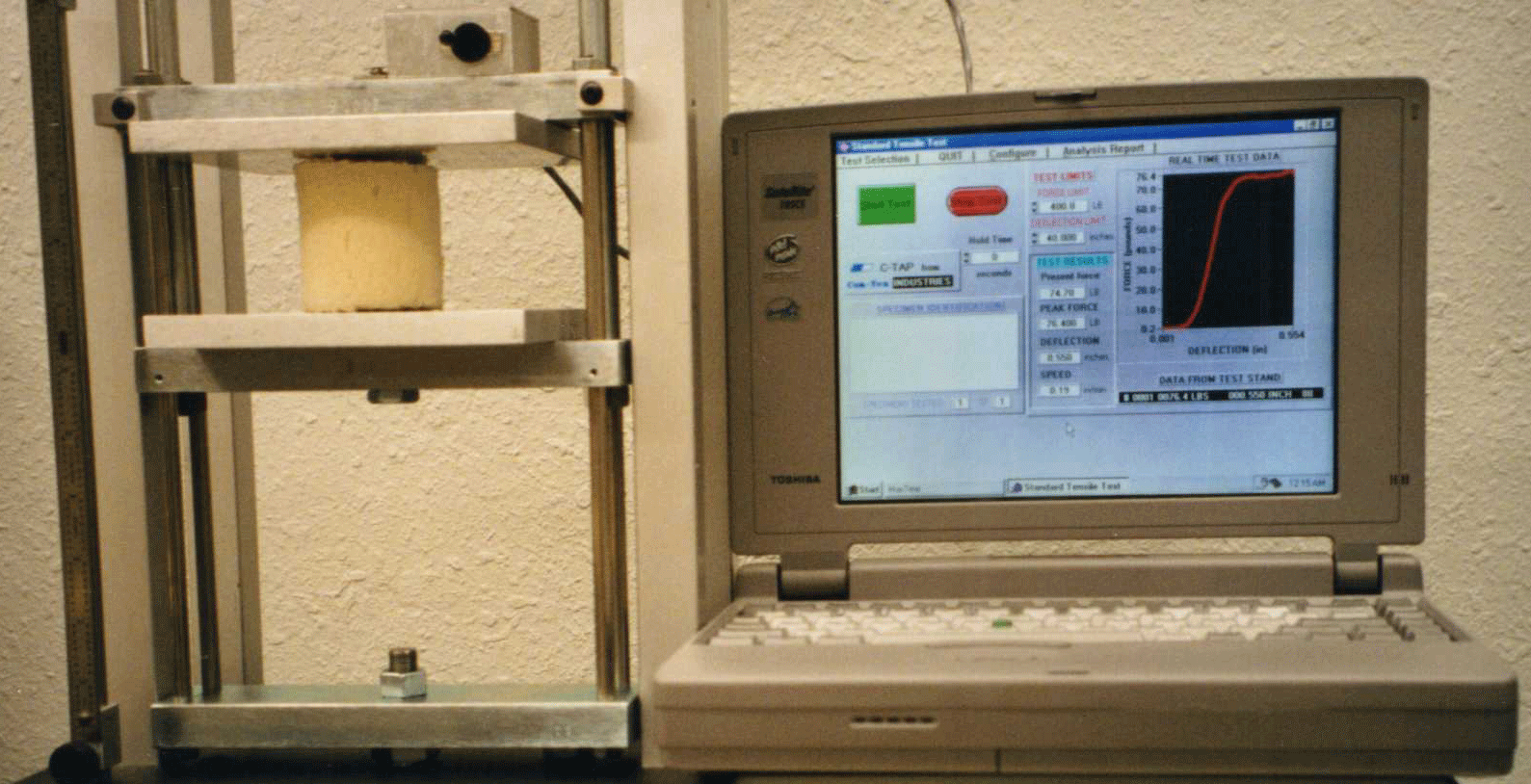 |
| In order for the field testing of SPF to be viable and accepted in the industry, it must be correlated to laboratory results achieved with ASTM D 1621. A study was performed to compare field testing using the Portable Foam Compression Tester to laboratory results using a constant rate of motion compression test system. Sixty (60) core samples of 2.25 inch diameter (with similar ages and densities) were randomly taken from the same application of spray applied polyurethane foam. The laboratory tests were run on a compression tester at a crosshead speed of 0.5 inch/minute, and the yield point was automatically detected. Compressive strength tests were performed on the Portable Foam Compression Tester to determine the material’s yield point using the procedures in the above section. The thickness of each sample was measured and thirty (30) tests were performed by each method. | 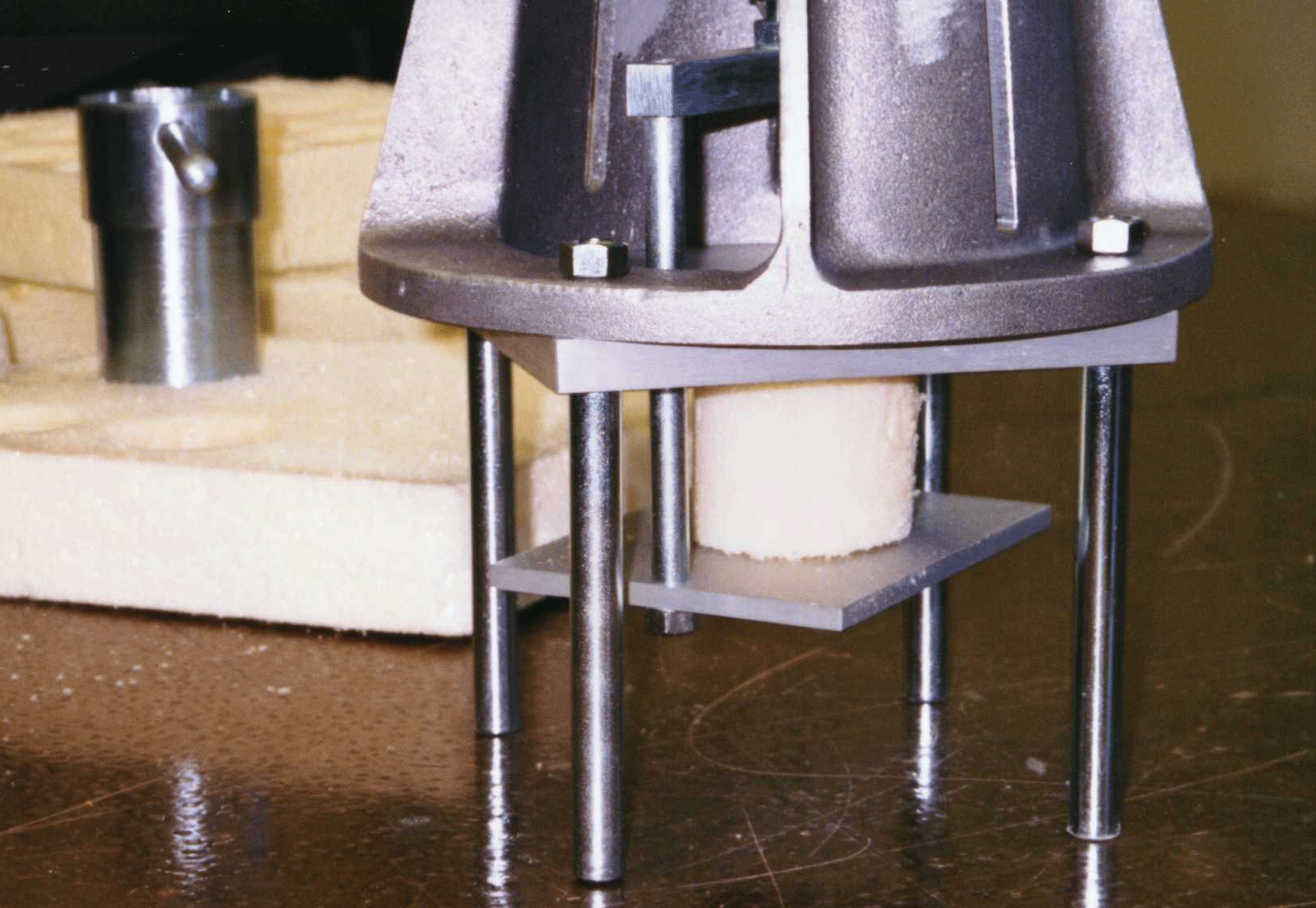 |
Correlation to Laboratory Results
Summary
| The field compressive strength tests performed with the Portable Foam Compression Tester gives moderately comparable results to those done in the laboratory. When used in conjunction with recommended application guides and procedures, the field test will improve the quality of the SPF installations by immediately identifying substandard compressive strength of installed materials. The field compression test is not meant to solely replace an experienced applicator’s visual inspection, “foot feel”, or density check. Nor does it take into account the difference in curing times between samples tested on side versus those tested in the lab. It is another analytical tool available that can identify substandard SPF installations on site. This allows for laboratory testing to be done and corrective action to be taken before the entire installation in complete, thus saving both time and money. |  |
Details test results
| LABORATORY RESULTS | FIELD RESULTS | |||||
| Sample # | HEIGHT (in) | YIELD (lb) | STRENGTH (psi) | HEIGHT (in) | YIELD (lb) | STRENGTH (psi) |
| 1 | 2 | 82.2 | 20.6 | 2 | 104 | 26.0 |
| 2 | 2 | 74.5 | 18.6 | 2.5 | 86 | 21.5 |
| 3 | 2.25 | 85.3 | 21.3 | 2 | 72 | 18.0 |
| 4 | 1.875 | 69.4 | 17.4 | 2.125 | 80 | 20.0 |
| 5 | 1.875 | 83.9 | 21.0 | 2.125 | 74 | 18.5 |
| 6 | 2 | 67.4 | 16.9 | 2.125 | 80 | 20.0 |
| 7 | 1.875 | 73.8 | 18.5 | 2 | 76 | 19.0 |
| 8 | 2 | 94.2 | 23.6 | 2.375 | 82 | 20.5 |
| 9 | 1.625 | 95.3 | 23.8 | 1.875 | 72 | 18.0 |
| 10 | 1.875 | 72.0 | 18.0 | 1.75 | 86 | 21.5 |
| 11 | 2.125 | 91.4 | 22.9 | 1.75 | 100 | 25.0 |
| 12 | 1.75 | 76.5 | 19.1 | 2.25 | 80 | 20.0 |
| 13 | 2 | 97.1 | 24.3 | 2.5 | 98 | 24.5 |
| 14 | 2.25 | 78.1 | 19.5 | 2 | 84 | 21.0 |
| 15 | 2.5 | 81.8 | 20.5 | 2 | 68 | 17.0 |
| 16 | 2.375 | 81.5 | 20.4 | 2.125 | 92 | 23.0 |
| 17 | 2.5 | 90.1 | 22.5 | 2.25 | 92 | 23.0 |
| 18 | 1.75 | 88.2 | 22.1 | 2.5 | 88 | 22.0 |
| 19 | 1.75 | 102.4 | 25.6 | 1.875 | 64 | 16.0 |
| 20 | 2 | 72 | 18.0 | 2 | 72 | 18.0 |
| 21 | 2 | 69 | 17.3 | 1.75 | 108 | 27.0 |
| 22 | 2 | 93 | 23.3 | 1.625 | 92 | 23.0 |
| 23 | 2.375 | 72.7 | 18.2 | 2.125 | 68 | 17.0 |
| 24 | 2.5 | 77.5 | 19.4 | 2 | 70 | 17.5 |
| 25 | 2.125 | 82.2 | 20.6 | 1.625 | 92 | 23.0 |
| 26 | 2 | 67.0 | 16.8 | 2.2125 | 72 | 18.0 |
| 27 | 2.125 | 94.4 | 23.6 | 2 | 84 | 21.0 |
| 28 | 2.25 | 63.8 | 16.0 | 2.25 | 96 | 24.0 |
| 29 | 1.875 | 81.4 | 20.4 | 1.875 | 72 | 18.0 |
| 30 | 2.125 | 93.9 | 23.5 | 2.125 | 88 | 22.0 |
| AVG | 2.06 | 81.73 | 20.43 | 2.05 | 83.07 | 20.77 |
| STD DEV | 0.23 | 10.45 | 2.61 | 0.24 | 11.58 | 2.89 |